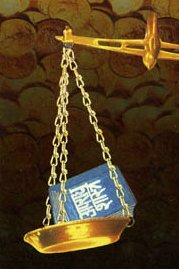Carmakara, Carmakāra, Carman-kara: 12 definitions
Introduction:
Carmakara means something in Buddhism, Pali, Hinduism, Sanskrit, the history of ancient India. If you want to know the exact meaning, history, etymology or English translation of this term then check out the descriptions on this page. Add your comment or reference to a book if you want to contribute to this summary article.
Alternative spellings of this word include Charmakara.
In Hinduism
Arthashastra (politics and welfare)
Source: Shodhganga: Kakati Ganapatideva and his times (artha)Carmakāra (चर्मकार, “cobbler”) is an official title designating one of the seventy-two officers (niyoga) of the Bāhattaraniyogādhipati circle, according to the Inscriptional glossary of Andhra Pradesh (Śāsana-śabdakośāmu). The bāhattaraniyoga-adhipati is the highest executive officer of this circle (including a Carmakāra). For example: During the reign of Gaṇapatideva, the area extending between Pānagal to Mārjavāḍi was entrusted to Gaṇḍapeṇḍāru Gangayasāhiṇi as Bāhattaraniyogādhipati. Later on, this office was entrusted to Kāyastha Jannigadeva.

Arthashastra (अर्थशास्त्र, arthaśāstra) literature concerns itself with the teachings (shastra) of economic prosperity (artha) statecraft, politics and military tactics. The term arthashastra refers to both the name of these scientific teachings, as well as the name of a Sanskrit work included in such literature. This book was written (3rd century BCE) by by Kautilya, who flourished in the 4th century BCE.
In Buddhism
Tibetan Buddhism (Vajrayana or tantric Buddhism)
Source: academia.edu: The Structure and Meanings of the Heruka MaṇḍalaCarmakāra (चर्मकार) is the name of a Vīra (hero) who, together with the Ḍākinī named Carmakārī forms one of the 36 pairs situated in the Guṇacakra, according to the 10th century Ḍākārṇava chapter 15. Accordingly, the guṇacakra refers to one of the four divisions of the sahaja-puṭa (‘innate layer’), situated within the padma (lotus) in the middle of the Herukamaṇḍala. The 36 pairs of Ḍākinīs and Vīras [viz., Carmakāra] are whitish red in color; they each have one face and four arms; they hold a skull bowl, a skull staff, a small drum, and a knife.

Tibetan Buddhism includes schools such as Nyingma, Kadampa, Kagyu and Gelug. Their primary canon of literature is divided in two broad categories: The Kangyur, which consists of Buddha’s words, and the Tengyur, which includes commentaries from various sources. Esotericism and tantra techniques (vajrayāna) are collected indepently.
India history and geography
Source: Cologne Digital Sanskrit Dictionaries: Indian Epigraphical GlossaryCarmakāra.—(EI 32), a shoe-maker. Note: carmakāra is defined in the “Indian epigraphical glossary” as it can be found on ancient inscriptions commonly written in Sanskrit, Prakrit or Dravidian languages.

The history of India traces the identification of countries, villages, towns and other regions of India, as well as mythology, zoology, royal dynasties, rulers, tribes, local festivities and traditions and regional languages. Ancient India enjoyed religious freedom and encourages the path of Dharma, a concept common to Buddhism, Hinduism, and Jainism.
Languages of India and abroad
Sanskrit dictionary
Source: DDSA: The practical Sanskrit-English dictionaryCarmakāra (चर्मकार).—m.
1) a shoe-maker, currier; वंशचर्मकृतस्तथा (vaṃśacarmakṛtastathā) Rām.
2) a mixed caste (from a Chāṇḍāla woman and fisherman).
Derivable forms: carmakāraḥ (चर्मकारः).
Carmakāra is a Sanskrit compound consisting of the terms carman and kāra (कार). See also (synonyms): carmakārin, carmakṛt.
Source: Cologne Digital Sanskrit Dictionaries: Benfey Sanskrit-English DictionaryCarmakāra (चर्मकार).—i. e. carman -kāra, m. A shoemaker, [Mānavadharmaśāstra] 2, 36.
Source: Cologne Digital Sanskrit Dictionaries: Cappeller Sanskrit-English DictionaryCarmakāra (चर्मकार).—[masculine] worker in leather, shoemaker.
Source: Cologne Digital Sanskrit Dictionaries: Monier-Williams Sanskrit-English DictionaryCarmakāra (चर्मकार):—[=carma-kāra] [from carma] m. a worker in leather, shoemaker (offspring of a Caṇḍāla woman by a fisherman, [Parāśara-smṛti]; or of a Vaideha female by a Niṣāda, [Manu-smṛti x, 36]; or of a Niṣāda woman, [Mahābhārata xiii, 2588]), [Varāha-mihira’s Bṛhat-saṃhitā lxxxvii, 35; Rājataraṅgiṇī iv]
Source: Cologne Digital Sanskrit Dictionaries: Yates Sanskrit-English DictionaryCarmakāra (चर्मकार):—[carma-kāra] (raḥ) 1. m. A shoe-maker.
Source: DDSA: Paia-sadda-mahannavo; a comprehensive Prakrit Hindi dictionary (S)Carmakāra (चर्मकार) in the Sanskrit language is related to the Prakrit word: Cammāra.
[Sanskrit to German]
Sanskrit, also spelled संस्कृतम् (saṃskṛtam), is an ancient language of India commonly seen as the grandmother of the Indo-European language family (even English!). Closely allied with Prakrit and Pali, Sanskrit is more exhaustive in both grammar and terms and has the most extensive collection of literature in the world, greatly surpassing its sister-languages Greek and Latin.
Kannada-English dictionary
Source: Alar: Kannada-English corpusCarmakāra (ಚರ್ಮಕಾರ):—[noun] a man who processes leather and makes and repairs leather goods.
Kannada is a Dravidian language (as opposed to the Indo-European language family) mainly spoken in the southwestern region of India.
See also (Relevant definitions)
Partial matches: Carman, Kara.
Starts with: Carmakaraka, Carmakaraluka, Carmakarana, Carmakaravata.
Full-text: Carmaka, Carmakari, Carumakaran, Loha-carma-kara, Karavara, Carmakaraluka, Carmashilpi, Carmakrittu, Carmara, Carmaru, Cammara, Carmakrit, Carmakarin, Camhara, Andhra, Gunacakra, Kara.
Relevant text
Search found 8 books and stories containing Carmakara, Carmakāra, Carman-kara, Carman-kāra, Carma-kara, Carma-kāra; (plurals include: Carmakaras, Carmakāras, karas, kāras). You can also click to the full overview containing English textual excerpts. Below are direct links for the most relevant articles:
Trishashti Shalaka Purusha Caritra (by Helen M. Johnson)
List of 18 guilds < [Notes]
Manusmriti with the Commentary of Medhatithi (by Ganganatha Jha)
Verse 10.36 < [Section II - Mixed Castes]
The Skanda Purana (by G. V. Tagare)
Chapter 27 - Characteristics of the Four Yugas (Caturyuga) < [Section 1 - Tīrtha-māhātmya]
Chapter 242 - Eighteen Prakṛtis (Castes and Sub-castes) < [Section 1 - Tīrtha-māhātmya]
Expiatory Rites in Keralite Tantra (by T. S. Syamkumar)
1.3. Expiatory Rites in Īśānaśivagurudevapaddhati < [Chapter 3 - Expiatory Rites in Kerala Tantric Ritual Manuals]
Mahabharata (English) (by Kisari Mohan Ganguli)
Section XLVIII < [Anusasanika Parva]
Harshacharita (socio-cultural Study) (by Mrs. Nandita Sarmah)
Part 2: Caste Hierarchy, Status and Duties < [Chapter 2 - Caste System]